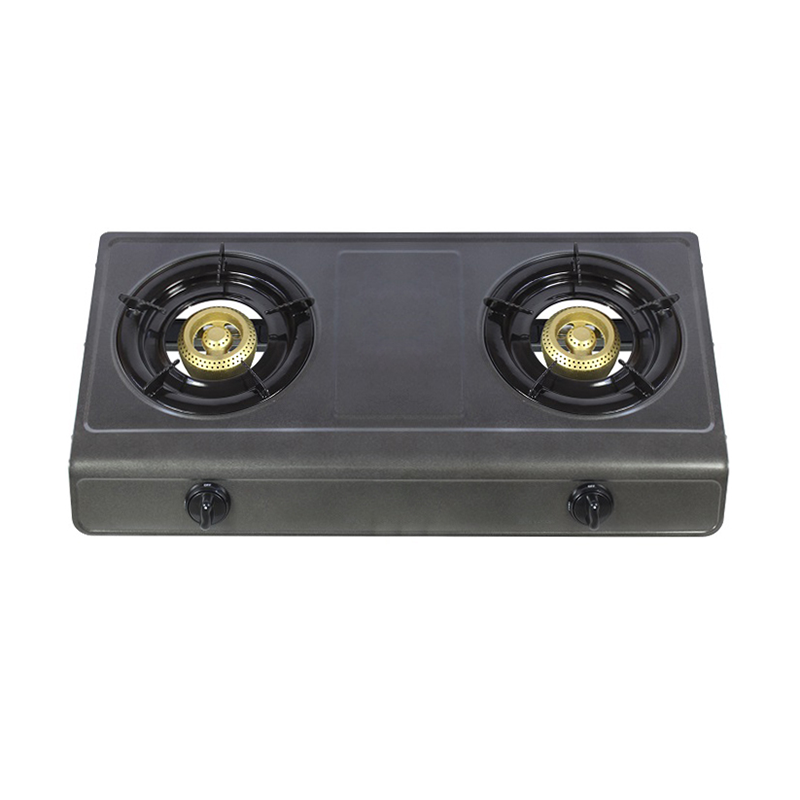Home cookers raise levels of benzene, a chemical linked to a risk of cancers of the blood cells, to well above "health benchmarks".
Gas and propane stove burners can emit a known carcinogen at levels higher than “second-hand tobacco smoke,” scientists at Stanford University revealed in a new study. Double Gas Cooker Camping

The researchers studied 87 stoves across California and Colorado in 2022 and found that gas and propane stoves “emitted detectable and repeatable levels” of a chemical called benzene.
Exposure to benzene has long been linked to a higher risk of cancers, such as leukaemia and other blood cell cancers, according to the US Centres for Disease Control and Prevention.
In some homes, the stoves raised the concentration of benzene to levels “above well-established health benchmarks,” the authors said in the study published in the journal Environmental Science and Technology this month.
The mean benzene emissions from these burners and from ovens set to roughly 180 degrees Celsius were 10 to 25 times higher than the emissions from electric alternatives.
“Benzene forms in flames and other high-temperature environments, such as the flares found in oil fields and refineries. We now know that benzene also forms in the flames of gas stoves in our homes,” said senior study author Rob Jackson, professor of Earth system science at Stanford, in an article published on the university’s website.
“Good ventilation helps reduce pollutant concentrations, but we found that exhaust fans were often ineffective at eliminating benzene exposure”.
Natural sources of benzene include volcanoes and forest fires, while exposure can also come from tobacco smoke, oil and gas development and gasoline combustion.
The scientists also looked at kitchen concentrations of benzene, finding that a gas or propane burner on high for 45 minutes raised the levels above baseline in every kitchen tested.
In 29 per cent of the kitchens, a single gas burner on high or an oven set to 350 degrees Fahrenheit (177 degrees Celsius) raised the concentrations of benzene to levels higher than what's been measured with second-hand tobacco smoke.
Yannai Kashtan, a PhD candidate at Stanford and author on the study, said that this finding was both "surprising and alarming", qualifying however that it's not a "perfect apples to apples comparison".
"Second-hand smoke contains other toxics apart from benzene as do to gas stove emissions," Kashtan told Euronews.
In six houses, the researchers also tested the benzene concentration in bedrooms and found between 5 and 70 times the baseline level.
They also tested emissions from cooking pan-fried fish and bacon but found that the emissions from the foods were “indistinguishable from zero”.
“Our results for these foods suggest that the benzene produced when cooking with gas and propane comes from the fuel burned and not from the food being cooked,” the study authors wrote.
The research marks "the first time such a strong link has been found between gas stoves and benzene," according to Kashtan.
He added that another finding of the study was that burning gas emits "70 - 640 times more benzene than typical stove leaks do".
The European Public Health Alliance, a non-profit organisation, has advocated for a phase-out of gas stoves at EU level, saying they are a “significant source of indoor pollution linked to negative health outcomes, including an increased risk of childhood asthma".
Previous studies had linked gas stoves to other pollutants such as methane, nitrogen dioxide, carbon monoxide, and formaldehyde and prompted calls for more regulation. Other studies have linked gas stoves to higher rates of childhood asthma.
Natural gas was used for cooking in 32.5 per cent of EU households in 2021, according to Eurostat. Oil and petroleum products (such as propane gas) were used in 11.8 per cent of EU households for cooking.
Gas is also often used for space and water heating inside homes.
While space and water heaters burn more gas and emit more pollution, however, they are almost always vented outside instead of in your home, Kashtan said.
"If people are worried about their exposure and want to reduce their exposure, obviously the sort of the ultimate way to reduce exposure is by getting rid of the source entirely," said Kashtan.
He suggested replacing your stove with an induction stove if you can afford it.
There are also "a lot of intermediate steps you can do to reduce your reliance on the stove," Kashtan said, including portable induction hobs that you can plug into an outlet or investing other electric cooking appliances.
Ventilation, also helps, including using a cooker hood and opening windows.

Burner Stove This article has been updated to include quotes from an interview with one of the study authors.